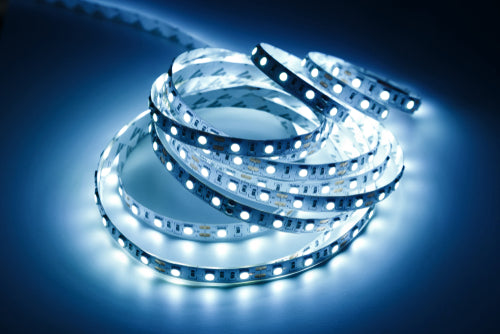
5 common LED strip light problems and how to fix them
LED lights have grown in popularity in recent years, serving as the perfect creative and energy-efficient addition to any home.
However, like many lighting features, LED strip lights can run into certain problems that affect their performance. But don’t fret! Light Supplier is here to guide you through effective ways to overcome them.
Browse our LED strip lights whilst you’re here for high-quality, reliable strip lights.
1. Flickering LED strip lights
Flickering lights can be frustrating to deal with. This can be caused by various reasons, including inconsistent power supply, loose or faulty connections, and overheating.
However, there are a few things you can do to fix flickering bulbs:
- Check power supply: Ensure that the power supply matches the voltage and amperage requirements of the LED strip lights. You can use a multimeter to check the output voltage.
- Secure connections: Inspect the points where the LED strip connects to the power source and any controllers. Replace any damaged wires and tighten any loose connections.
- Improve ventilation: To do this, avoid placing the strip lights in enclosed spaces or purchase a fixture with higher heat tolerance.
- Dimmer compatibility: Ensure that the dimmer you are using is compatible with your LED strip lights. If not, purchase a new one.
2. LED strips not sticking properly
There are various reasons why your strip lights may not be sticking properly, including a low-quality adhesive or a dirty or damp surface.
Similar textures, such as rough or porous surfaces, don’t combine well with the adhesive on strip lights.
A few ways to overcome this include:
- Clean the surface: Before adding your strip lights, make sure to thoroughly clean the surface beforehand. Use mild detergent or alcohol wipes to remove any oil, dust, or grime.
- Test adhesive quality: Test a small section of the LED strip on the intended surface beforehand to see if it sticks well. If not, buy a stronger adhesive or choose a different location for the lights.
- Use additional adhesives: For extra strength, use double-sided tape or adhesive promoters designed for LED strips.
- Choose the right surface: Select a smooth, non-porous surface for best results. If this isn’t accessible, mount the LED strip and attach it to the textured surface.
3. Uneven brightness
If certain parts of your strip lights appear dimmer than the rest of the fixture, this can create an uneven appearance, disturbing the ambience of your home.
Brightness issues can be caused by a voltage drop in long strip lights, inconsistent bulbs, and insufficient power supply.
To address these issues, follow these steps:
- Address voltage drop: To fix a drop in voltage, use a higher voltage supply and then step it down at the strip. You can also install the strip in shorter sections with individual power sources to prevent faulty bulbs.
- Check and upgrade the power supply: Ensure the power supply matches the requirements of the LED strip. If not, upgrade to a higher-capacity power supply.
- Use amplifiers/repeaters: LED amplifiers and repeaters help maintain consistent voltage and brightness for longer strips.
4. Colour issues
Inconsistent colours or fading can affect the overall appearance of your home. When creating mood lighting or a cosy atmosphere, a faulty fixture can ruin the aesthetic.
To overcome any colour issues in your LED strip lights, follow these steps:
- Check and adjust settings: Check the controller or remote settings. Reset the controller or follow the manufacturer's guide to recalibrate the settings.
- Ensure compatibility: Ensure that the LED strip and its controller are compatible. Stick to the same brand to avoid any inconsistencies between products.
- Inspect for physical damage: Inspect the LED strip and controller for any signs of physical damage, such as burnt-out LEDs or damaged components.
- Check power supply: Check the power supply meets the LED strip’s requirements. An unstable power supply can lead to colour inconsistency.
5. Dead sections in LED strip lights
If certain parts of your LED strip lights won’t light up, you may be dealing with a dead section. This is a common problem that can affect the performance and appearance of your LED strip lights.
To check and repair dead sections, follow these steps:
- Test individual segments: To determine the location of the fault, check the strip in individual segments. This will help you understand what needs repairing.
- Inspect for physical damage: Inspect the strip light for visible breaks, cuts, or bends in the strip. Repair the damaged section as necessary.
- Check connections: Check connections at the power source, between strips, and at any controllers or dimmers. Re-solder or tighten them to overcome issues.
- Replace faulty sections: Cut out the faulty part and replace it if the strip design allows it.
Choose Light Supplier for high-quality LED strip lights
At Light Supplier, we pride ourselves on our customer service and reliability. Each of our products is made with quality and reliability in mind.
With a wide selection of strip lights to choose from, we have warm, colour-changing and multi-coloured strip lights available to add a fun feature to your home.
Browse our LED lighting products today to upgrade your home at a low cost.